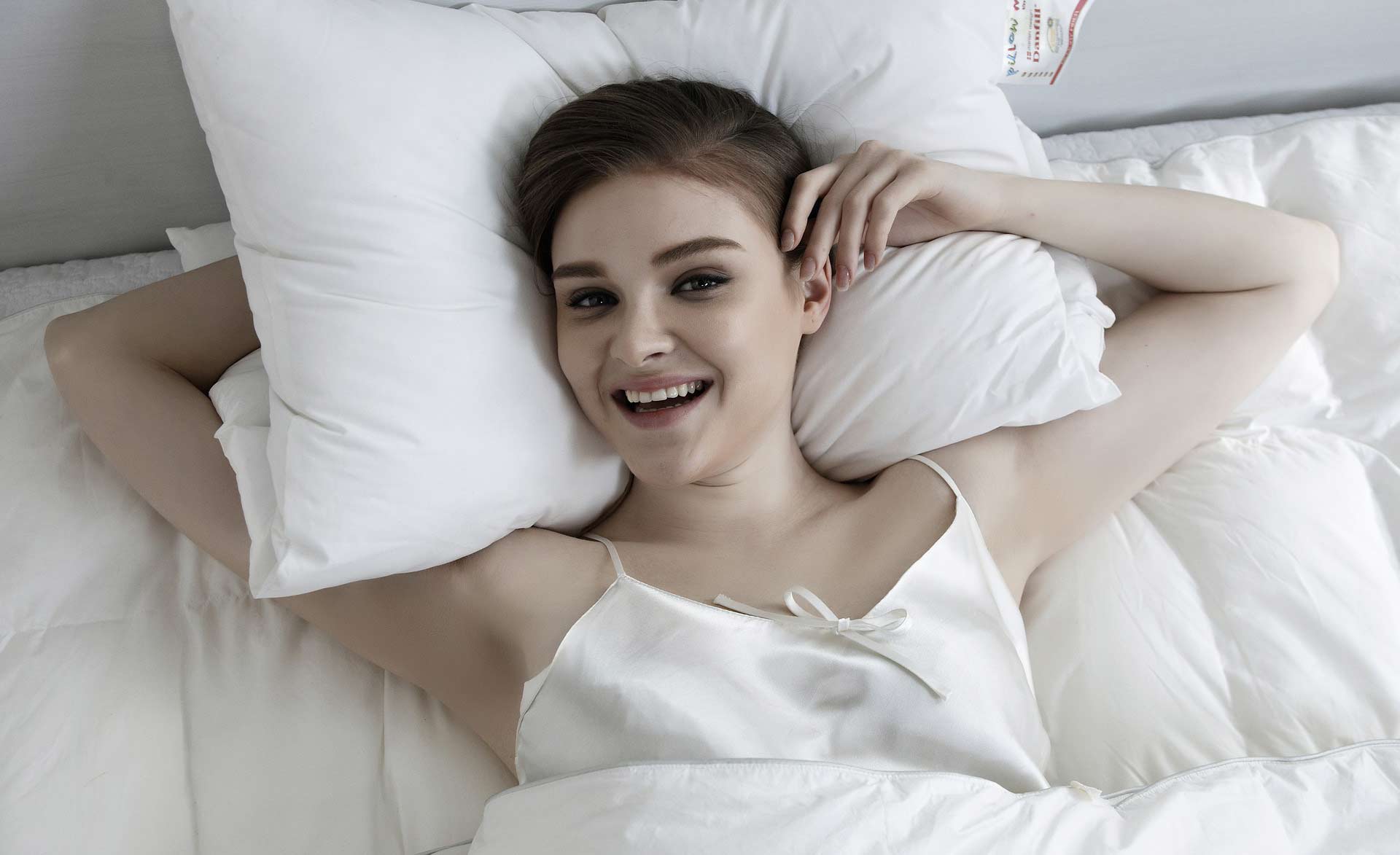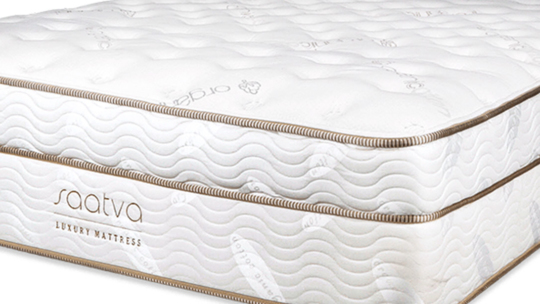A good night’s sleep is absolutely essential to your overall health and happiness.
Why? Because your sleep has a significant effect on your performance and attitude the following day.
After an uncomfortable sleep, you’d better prepare for a lousy morning. In addition to lifestyle, medication, and nutrition, your choice of mattress is an important contributor to a sound sleeping routine.

But bear in mind: choosing the right mattress is no walk in the park. There are so many considerations to be aware of, including:
- When to buy a mattress
- Where to buy a mattress
- How to choose a mattress
- How to fit your mattress to a new bed
With that, let’s dig into the most critical areas you need to consider when deciding on your perfect mattress.
Table of Contents
When Should You Shop for a New Mattress?
While there is no set-in-stone timeline for changing your mattress, several pointers can guide you on when to purchase a new one:
- When your mattress starts to get saggy and lumpy. Saggy mattresses cause various health complications, including neck pain, backaches, stiffness, and general tiredness.
- If you’d rather sleep on the couch or in a hotel room, then it’s time to throw away that old mattress.
- If your current mattress is eight years or older, it’s served its time. You should plan to upgrade to a new one.
Types of Mattresses
The popular narrative that one type of mattress is superior to another holds no water. It really comes down to individual customer preference.
Some people like a soft mattress that they can sink into — while others prefer the firm sort that guarantees maximum support. To that end, there are different mattress materials on the market to suit every need.
Memory Foam Mattresses

Memory foam mattresses are among the most popular in the US due to the superior comfort and support they provide.
Initially developed as protective cushions for passengers in a plane accident, these mattresses leverage the low resilience characterizing the polyurethane foam — offering up a sweet contouring hug.
The foam slowly regains its original form, allowing it to conform to nearly every inch of your body.
Memory foam mattresses even boast excellent motion isolation capabilities. This means that you no longer need to lie awake as your partner tosses and turns in bed.
One observable con of a memory foam mattress is the chemical smell when you first open the package. Some people are particularly sensitive to this smell. To avoid this problem, let your new mattress air out for a day or two before using it.
Another caveat with the mattress is that they tend to trap and absorb heat due to the dense material. This can be uncomfortable if you prefer a cool night’s sleep.
Memory foam is ideal for side sleepers due to the deep hug it provides, relieving pressure from the shoulders and hips.
Latex Mattresses
If you’re looking for a bouncy, lively mattress — latex is your best bet. The foam is extracted from the Hevea-Brasiliensis tree. The all-natural material gets a seal of approval from eco-friendly sleepers.
Latex provides natural cooling, making it an ideal option for customers who prefer a cooler night’s sleep. These mattresses are best for combo sleepers who get their z’s in a variety of positions.
Innerspring Mattresses
The oldest and most popular type of mattress, innerspring mattresses are preferred for their longevity on the market. This means that most buyers are aware of exactly the kind of sleep they will get, unlike other mattress types.
Innerspring mattresses feature tall sections of steel coils, making them the most durable on this list. The spaces between the coils allow for maximum air circulation.
The coil feature provides a firm mattress, ideal for sleepers who want solid body support.
Also, due to the emergence of new mattress types, their demand has reduced over time — making them the most affordable option.
They are best for stomach sleepers, back sleepers, and heavy sleepers as they provide much-needed support and firmness.
Hybrid Mattresses
As the name suggests, this mattress type is a hybrid of different materials. It combines a top layer of memory foam with springs. This produces a balanced feel and is perfect for sleepers looking for a little bounce and adequate body support.
The hybrid build provides a contouring hug while, at the same time, ensuring motion isolation.
Note: The best innerspring mattresses are those with at least 3 inches of memory foam because increasing the foam further takes away the bounce that comes with the coils.
One slight con is that they are the most expensive due to the different materials used in their design.
Hybrid mattresses are ideal for back sleepers and combo sleepers who are looking for a bouncy feel and good support.
Other types of mattresses include:
Pillow-top mattresses — these are either latex, foam, or spring mattresses with a layer of very soft material added at the top to increase comfort.
Air beds — these are inflatable mattresses made of either rubber, urethane plastic, or polyvinyl chloride (PVC). People generally choose these for deep contouring and support.
Choosing a Mattress Based on Sleeping Position
Mattress firmness is another critical consideration. A study on 313 adults for 90 days showed that those who used a medium-firm mattress experienced less pain in bed than those who used a firm one.
Your sleeping position determines the level of firmness appropriate for your mattress, as discussed below.
Back Sleepers
This class of sleeper is caught somewhere between firm and soft. They require medium-firm mattresses that hold up their shoulders and hips and ensure alignment.
The mattress should be soft enough to relieve pressure from the shoulders and hips.
Fact: On a scale of 1-10 in terms of firmness, with 10 being the most firm — the ideal mattress for back sleepers is between 5.5 and 7.
Side Sleepers
Owing to the pressure applied on the hips and shoulders, side sleepers require a softer mattress with deep pressure relief. Otherwise, they are likely to wake up with aching shoulders.
They require a contouring mattress that hugs the body, releasing pressure from these two high-pressure contact points. An ideal mattress for side sleepers should have a firmness of between 4 and 6.
Memory foam mattresses work perfectly for side sleepers because of their softness and contouring capabilities.
Stomach Sleepers

Stomach sleepers find it difficult to land on the ideal mattress. Too soft memory mattress and they feel smothered; too firm and they are strained.
What works for stomach sleepers is an ultra-firm mattress. This enables them to align their shoulders and hips with the rest of the spine.
Hybrid mattresses and innerspring mattresses work perfectly for this class because of their bounce and support, ensuring maximum alignment. Out of 10, their ideal mattress is one with a firmness of 7-9.
Combo Sleepers
You may belong to this exclusive class of night ninjas who can’t remain in one sleeping position for more than an hour. This class needs a mattress that is high in bounce and mobility.
This ensures a smooth transition between one style to another. In terms of firmness, they require a balanced mattress that encompasses both softness and support. A buoyant latex mattress or a hybrid version works well here due to the bounce capabilities.
The Ideal Mattress for Your Weight
The last thing you need to consider is your body weight.
You’re probably wondering, What does my weight have to do with my choice of mattress? Well, the feel, sinkage, and cooling of a mattress all depend on your body weight.
Below are the different mattress requirements based on three weight categories:
Lightweight Sleepers (150 lbs and below)
If you’re lightweight, you’re in luck. This makes you less likely to sink into soft mattresses like our heavyweight counterparts. A relatively soft mattress with firmness of between 3-4 will work perfectly for you. This is because it’s gentle enough to offer that deep hugging you desire while still firm enough to support your weight.
Average Sleepers (150 lbs – 200 lbs)
People in this weight class are more likely to press down on a soft mattress than lighter ones. Consequently, you need a mattress with extra support, especially at the base, to ensure sufficient firmness. A 5-7 on the firmness scale is perfect for you.
Heavyweight Sleepers (200 lbs and above)
Those who belong to this class are not as lucky in finding comfortable beds on the market. However, a few hacks will lead you to the perfect solution.
One, always go for a firm mattress with thick layers of support foam. This ensures that the mattress is firm enough and relatively soft at the same time. On the extreme, you may want to go for an innerspring mattress with a top pillow layer.
With these considerations, we hope to have alleviated your predicament of finding the perfect mattress.
Visit Sleep Review for the best reviews on mattresses, sheets, and pillows as you look for that dreamy sleeping experience.



